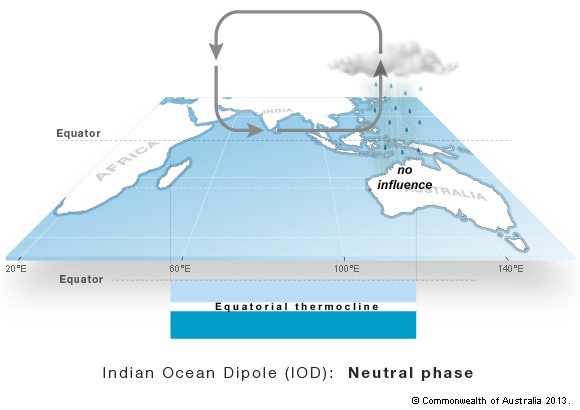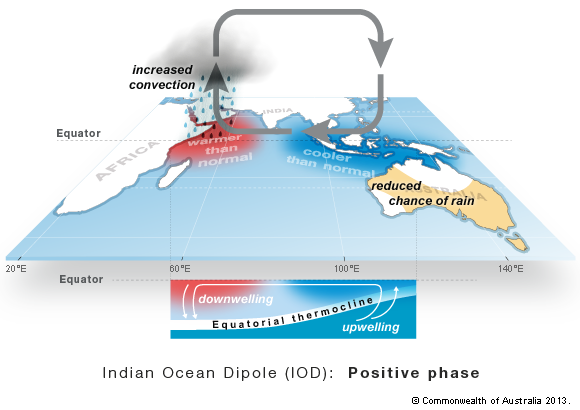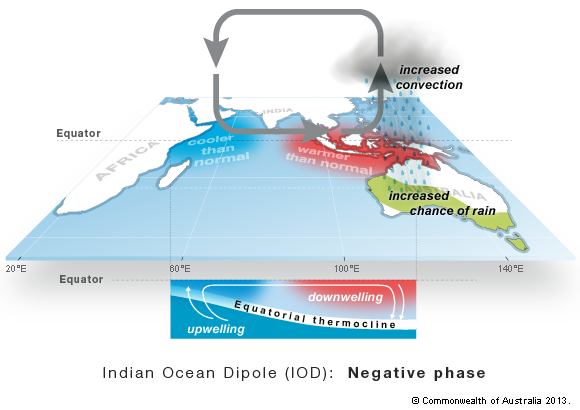What is Indian Ocean Dipole (IOD)?
Meteorologist were nicely predicting the long range forecast over India and Indonesia by observing the El Nino and ENSO conditions. In 1997 it was a strong El Nino year and Meteorologist predicted drought over India and Indonesia. But India received good amount of rainfall during south west monsoon season. There Indian Ocean Dipole (IOD) came in to picture. It was first identified by climate researchers in 1999.
So below is the information explained:
What is IOD?
The sea surface temperature oscillation between the western and eastern tropical Indian Ocean causing alternate warm and cold pool is called Indian Ocean Dipole (IOD).
Meteorologist monitored the temperature of two regions in the Indian Ocean. One in the west between latitude 10 degree north to 10 degree south and longitude 55 degree east to 65 degree east. Another in the east between latitude equator to 10 degree south and longitude 90 degree to 95 degree east.
There are different phases of IOD:
1) Neutral 2) Positive and 3) Negative
Neutral IOD
The condition in which there is little change in the sea temperatures across the tropical Indian Ocean is called neutral IOD. Air rises above warm sea over Northwest of Australia and sinks over the western part of the Indian Ocean with westerly winds along the equator.
Images source: www.bom.gov.au

Positive IOD
In this phase the westerly winds over equator weakens shifting the warm pool over west Indian Ocean and allowing cool water to rise up from the deep ocean in the east. When western block is warmer than normal and eastern block is colder than normal, it is called positive IOD phase. In positive phase India get good rainfall and Australia get deficit rain.

Negative IOD
It is reverse of Positive IOD. When eastern block is warmer than normal and western block is colder than normal, it is called negative IOD phase. In negative phase Australia get good rainfall.

History of Indian Ocean Dipole:
1. Identified in 1999.
2. 12 positive IOD since 1980
3. No negative IOD from 1992 to 2010.
4. Positive IOD – 1997-98 and 2006
5. The ten negative IOD years selected are 1958, 1960, 1964, 1971, 1974, 1975, 1989, 1992, 1993 and 1996.





301 Moved Permanently
More info!